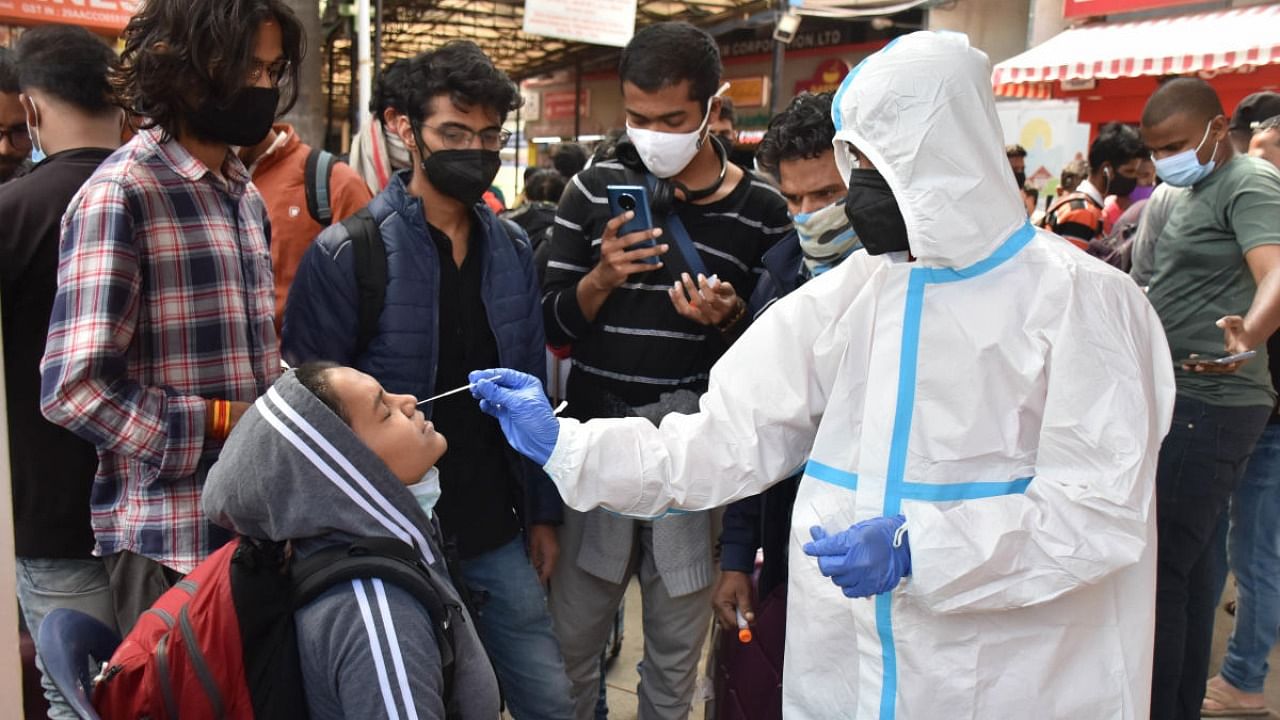
For the last seven days, Bengaluru has been averaging a test positivity rate of 1.18 per cent but from Sunday, this rate crossed 2 per cent for the first time since June 17. The city’s test positivity rate on Sunday was 2.19 per cent and on Monday it was 2.36 per cent.
According to a recent colour-coded response system recommended by the Technical Advisory Committee (TAC) to the state government, if this positivity rate sustains for the next five days, more stringent restrictions could be brought in. A weekly test positivity rate (WTPR) of over 3 per cent is ground for the introduction of a lockdown.
Statewide, Karnataka’s seven-day test positivity rate is still a manageable 0.84 per cent according to data provided by the Health and Family Welfare Department.
While a TAC member said that the alert chart has not been formally accepted by the state government and is expected to be discussed during Tuesday’s meeting with Chief Minister Basavaraj Bommai, Revenue Minister R Ashoka on Sunday had said that the Centre had already classified Bengaluru Urban as a “red” zone and that the state was considering additional restrictions to help reduce cases and hospitalisations.
The minister had also added that amid growing cases, the government would likely adopt all future recommendations made by the TAC, including more stringent restrictions. A government official said that the adoption of the system and its conditions will be discussed in a meeting to be held with the chief minister on Tuesday evening.
Delhi model
Adapted from Delhi’s third wave action plan, the colour-coded response system links the state government’s pandemic response to the weekly test positivity rate.
In the “yellow” alert phase, which is defined by a weekly test positivity rate of below 1 per cent, there are no specific restrictions barring the enforcement of mask-wearing and Covid appropriate behaviour plus caps on social events and funerals. A weekly test positivity rate of between 1 and 2 per cent is defined as “orange”.
During this period, it is recommended that cinemas and auditoriums, salons, schools and colleges, pubs and bars, restaurants, offices and factories, recreational clubs and all public transport including Metro trains function at 50 per cent capacity. Furthermore, this alert period dictates that malls and shopping complexes should function only between 6 am and 1 pm.
The last alert level is “red”. This kicks in when the weekly test positivity rate equals or crosses 2 per cent. Here, physical closure of malls and shopping complexes are recommended and the operation of markets is to be restricted between 6 am and 1 pm.
Schools would have to be closed and classes moved online. Offices and factories would also be required to move their employees to work from home. Meanwhile, parks and gardens, salons and barbershops, plus gyms and places of worship would be closed. All sports activities, including pools and gyms, would have to shut down. There would also be a cessation of public transport.
Marriages, social events and funerals would see more caps on attendance.
The response system was formalised by the TAC during its 144th meeting held on December 29, as members stated that they expect an imminent worsening of the situation. “From the previous experience of two waves in Karnataka, the case surge in Bengaluru/Karnataka was preceded by the surge in Mumbai/Maharashtra,” the report stated.
Watch latest videos by DH here: